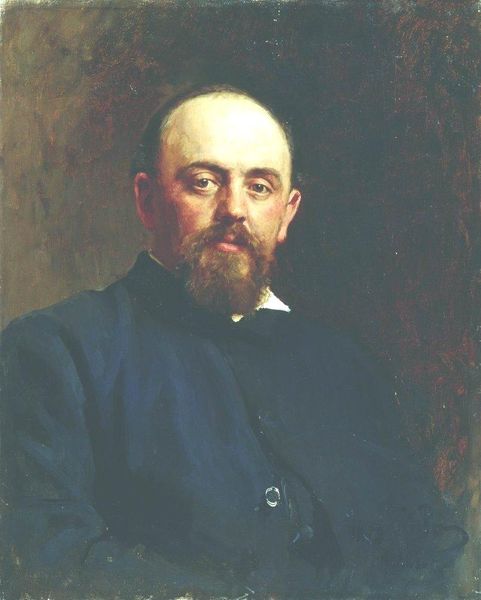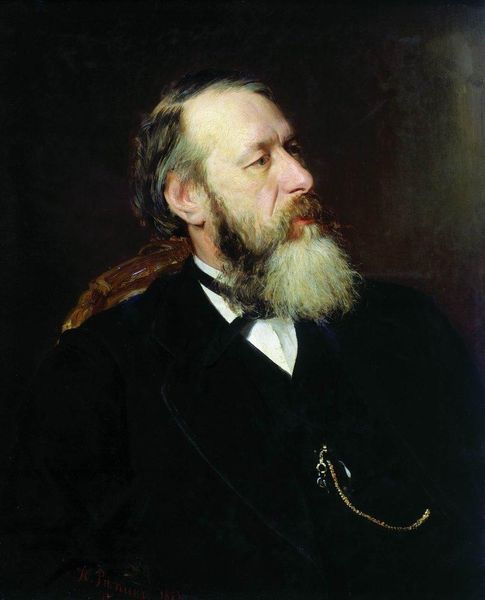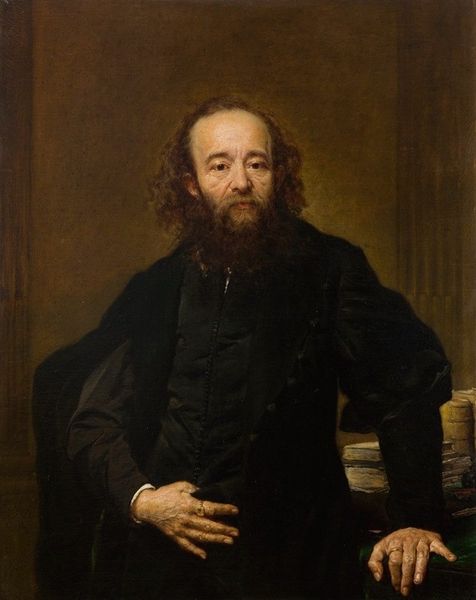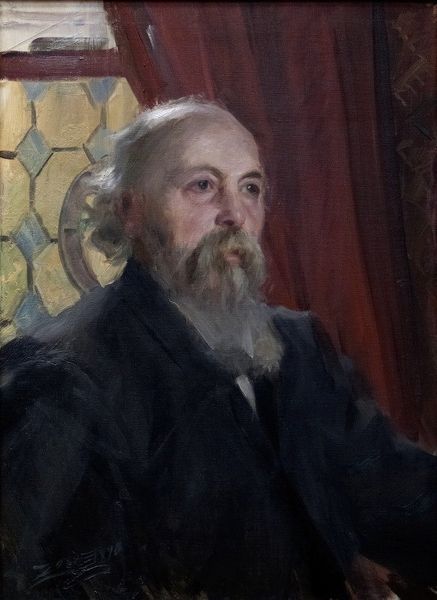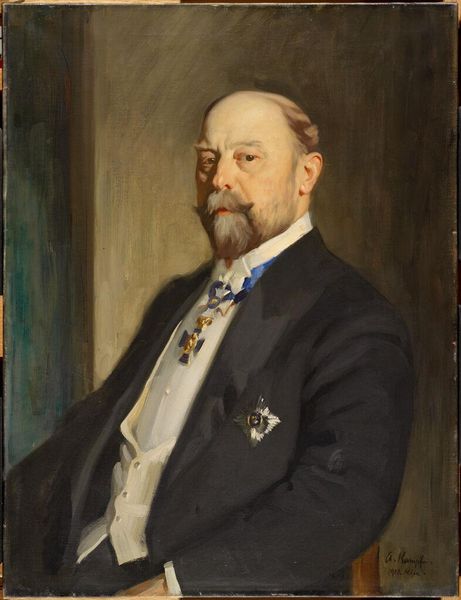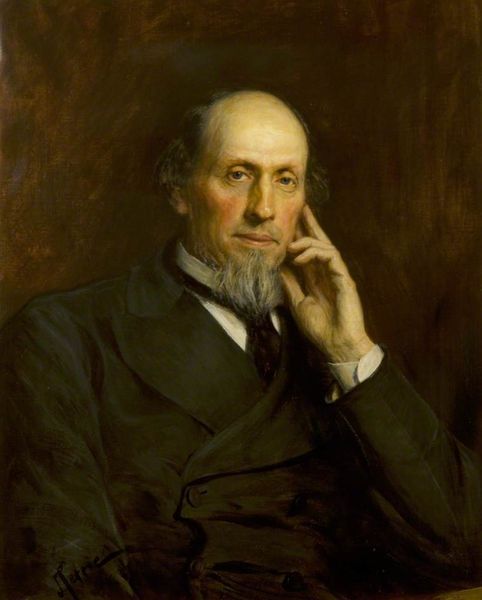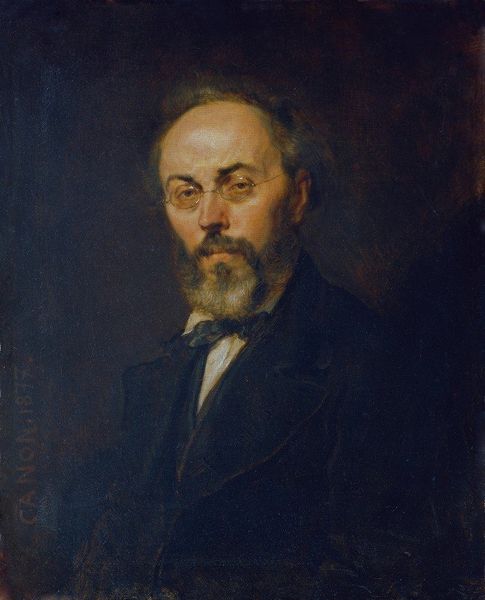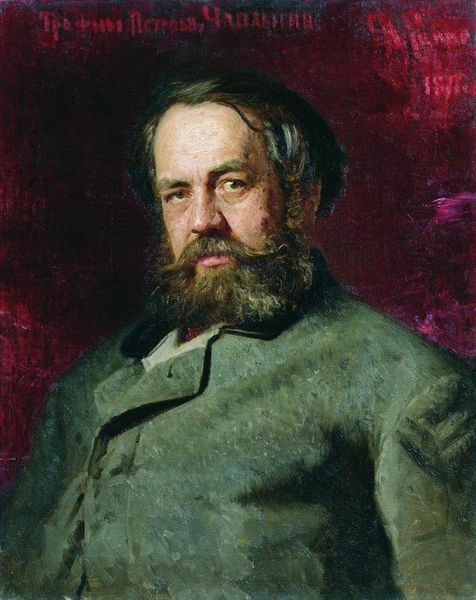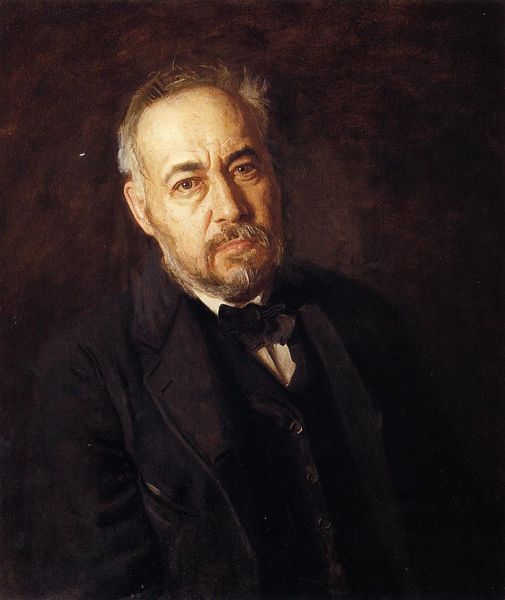
Copyright: Public domain
Editor: This is Ivan Kramskoy's "Portrait of the Poet Nikolai Nekrasov," painted in 1877 using oil. I’m struck by the sitter's reserved and contemplative expression and the very somber coloration. What can you tell me about what’s going on here? Curator: Let us focus on the formal elements first. Observe the brushwork; Kramskoy uses subtle gradations of tone and almost imperceptible brushstrokes to achieve a realistic likeness and muted texture. This, combined with a restrained palette, creates a quiet intensity. Consider also how the composition directs our gaze—the crossing of Nekrasov's arms creates a stable triangle, drawing attention to the central mass. How does this compositional strategy contribute to the overall mood of the work, in your opinion? Editor: I think that subdued feeling might come from the palette; he seems to be restricted to browns, blacks, and greys, lending itself to a reserved emotional climate. It’s more subdued and straightforward. Curator: Precisely. Moreover, it is vital to consider that by simplifying the composition to these basics, and controlling color, texture, and line, Kramskoy communicates something profound with such simple tools. Notice also that this reduction serves to enhance the expressiveness of Nekrasov's gaze, which emerges as the focal point. How would the piece differ had Kramskoy chosen an explosion of vibrant color? Editor: I think a painting that chose a brighter palette may seem more extroverted or dynamic. This is thoughtful. Curator: It's true; these subdued tones are intentional artistic decisions that amplify the seriousness and interiority of Nekrasov’s presence. Kramskoy’s understanding of the relationship between form and meaning is quite apparent. Editor: I never thought that restraint itself could communicate something so directly. Curator: Well, these simple features create a rich story. A lesson in simplicity perhaps.
Comments
No comments
Be the first to comment and join the conversation on the ultimate creative platform.
